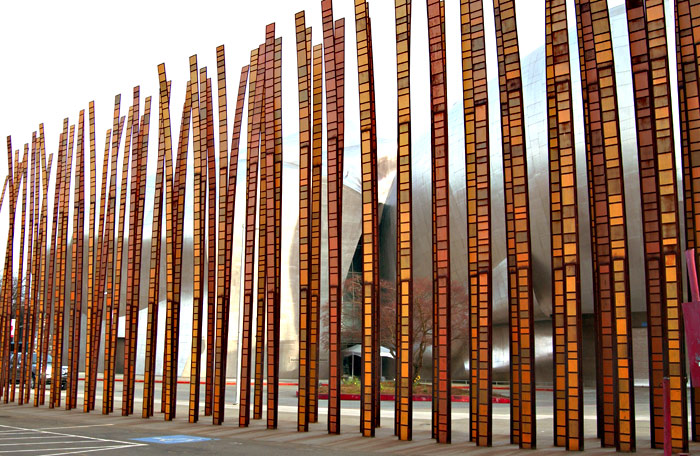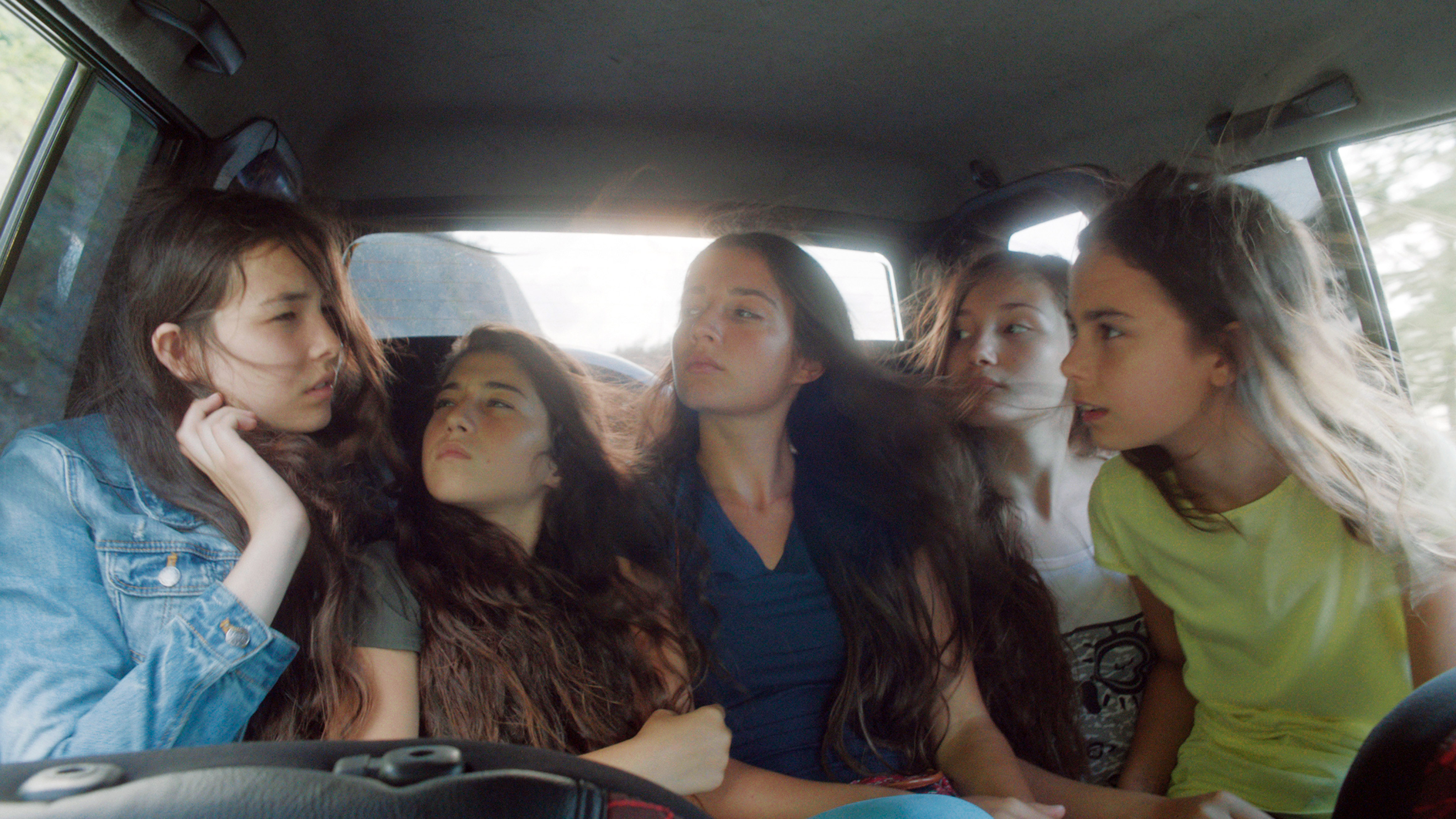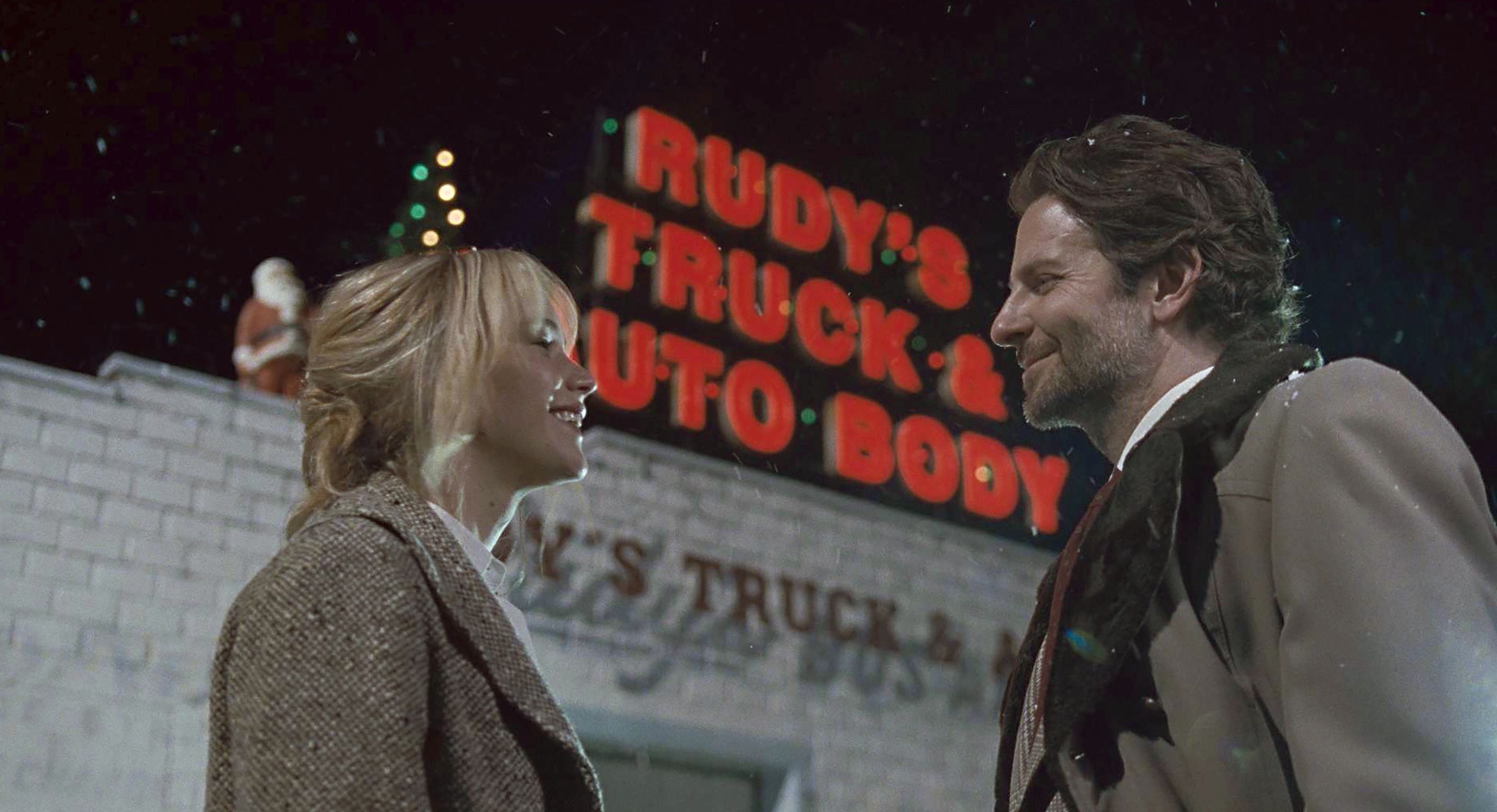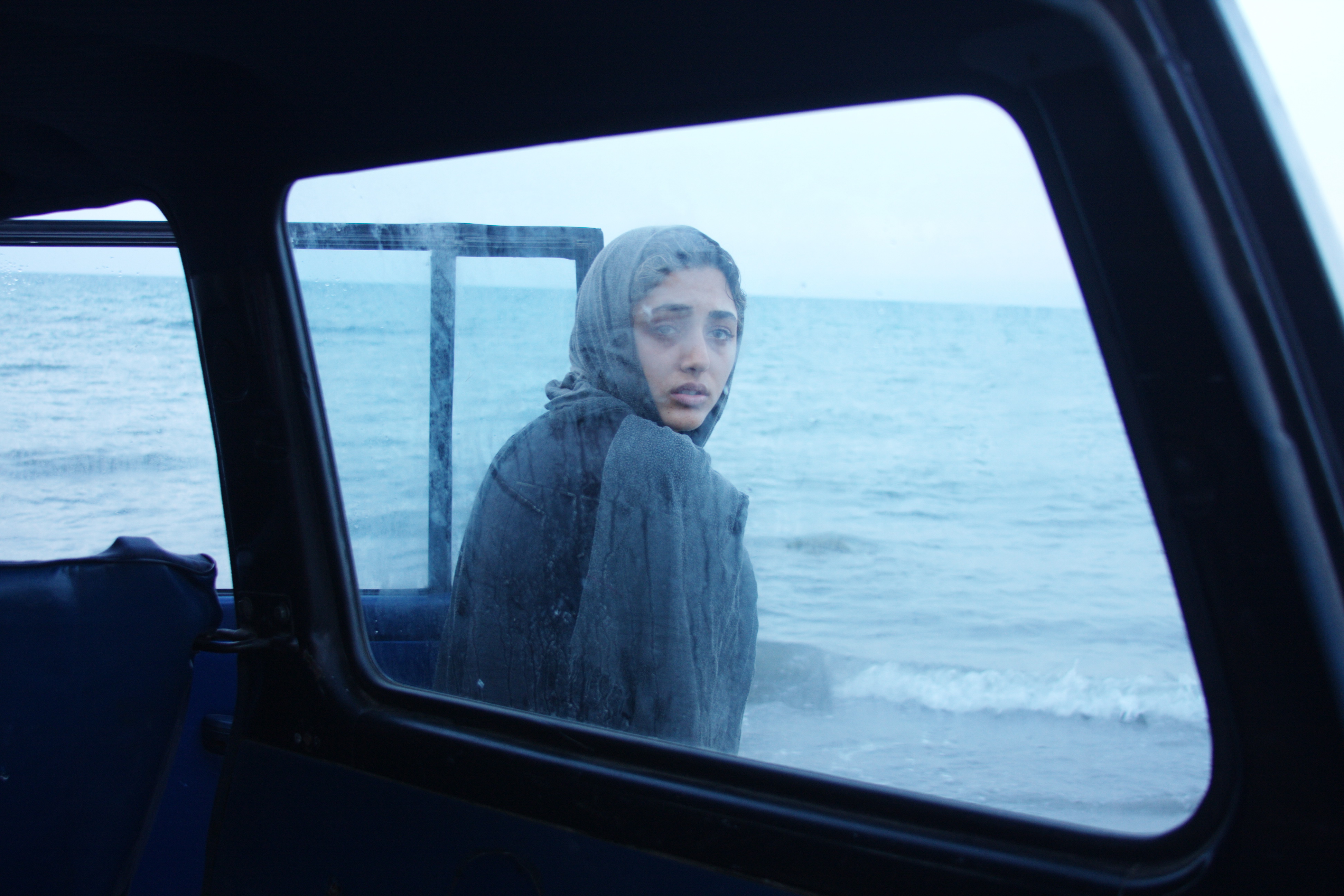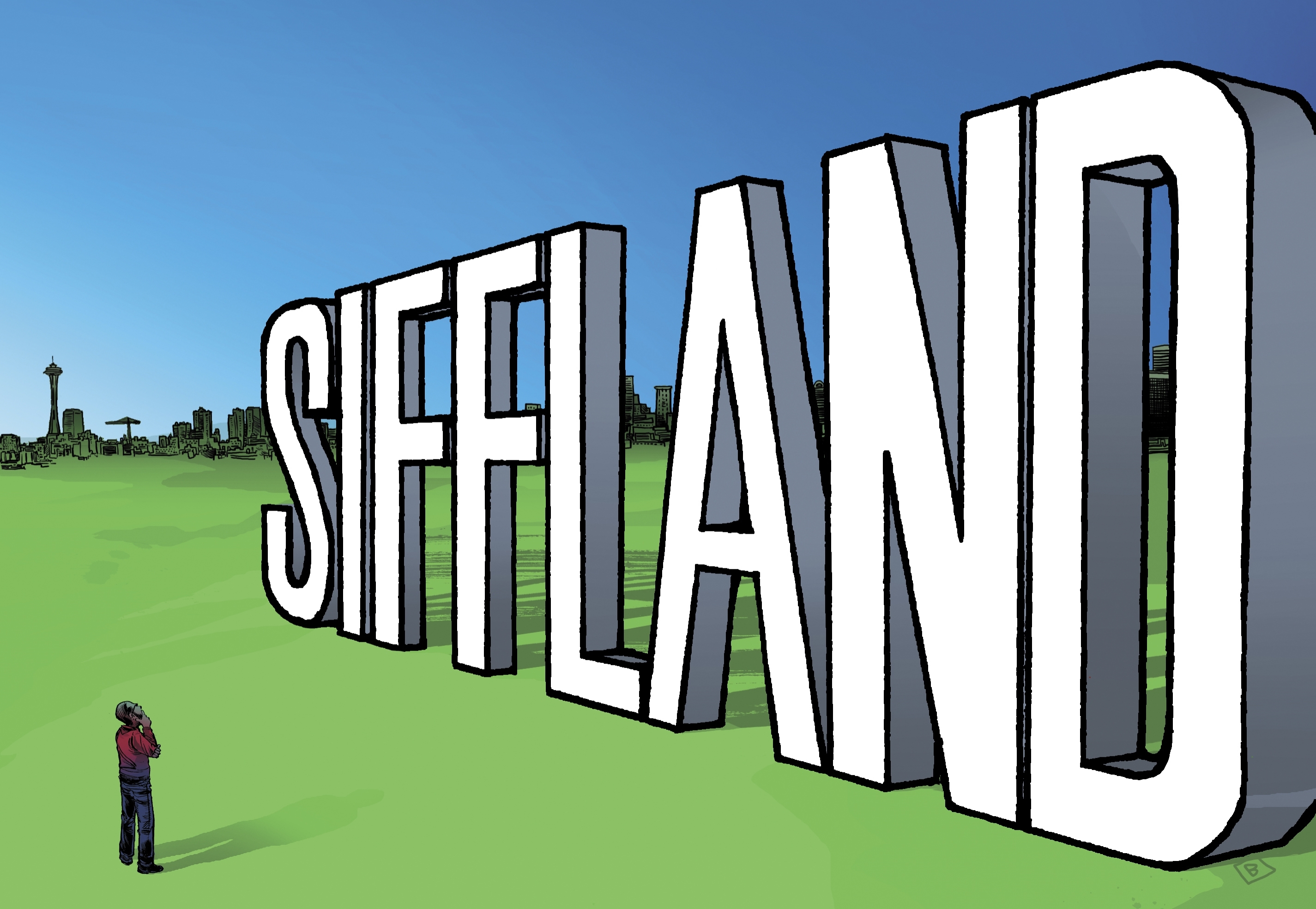Since SAM’s acclaimed $85 million Olympic Sculpture Park opened two years ago, more than a million tourists and local artgoers have flocked to the ramped, terraced site, dotted with works by prominent international artists. But all the attention lavished on SAM’s outdoor space, gloriously situated against sound and mountains, may give you the impression that this sanctioned preserve, patrolled by security guards and with a store/cafe in the PACCAR Pavilion, is the only place in the city where good art can be found al fresco and on the cheap.
Au contraire.
There’s a wealth of accessible, interesting, and sometimes even important public art far beyond the border of SAM’s waterfront compound (or even right next to it). No single collector or institution governs these far-flung sites and installations, which include freely viewable art sitting on private land.
So set your Google waypoints en route as we tour some of the best pieces of public art (plus a few lost, overlooked oddballs) in and around Seattle, some of which are so undersung they don’t even have a placard identifying them. All are open for viewing 24 hours a day, unless otherwise noted.
Adjacent, Against, Upon
Myrtle Edwards Park
The Olympic Sculpture Park has somehow eclipsed and subsumed the identity of Myrtle Edwards Park, which was established (with a different name) back in 1964, when SAM was still a small institution confined to Capitol Hill. The narrow old shoreline park was renamed in 1976 for the pioneering city councilmember (1894–1969), and public art has been added at various junctures. Walk north of the OSP and you’ll find Michael Heizer’s Adjacent, Against, Upon (1976), which creates a grammar among three giant concrete slabs, obviously manmade, and three corresponding granite boulders (quarried from the Cascades and delivered by barge). The work is a series of prepositions running south to north, a delicate dance of heavyweights that tip the scales between 30 and 50 tons. Back in ’76, when the project was funded by the NEA, City Light, Virginia Wright, and the Seattle Arts Commission (established in 1971), it was “initially controversial,” according to the city Web site. It’s easy to imagine what might be called the Richard Serra Effect—it’s too big, too unfriendly, too invasive; it’s not a statue with a noble or smiling face (remember that patriotic bicentennial year). Three decades later, surrounded by well-tended gravel, the installation holds up remarkably well. Visitors canoodle, picnic, and shoot photos upon the rocks (or adjacent, or against): Unlike your snooty OSP, there’s no prohibition against touching or climbing on the things. Each smooth slab is a foundation. Each roughhewn boulder lies in a position of order or disorder, depending on which direction you walk past it. The work either illustrates entropy or acts despite it. It was also reportedly the first public commission for Heizer, then 32, who for the past few decades has been remaking a big patch of Nevada desert into City, already considered one of America’s most significant examples of environmental art. (He’s continuing the tradition of his late friend and colleague Robert Smithson, famed for Spiral Jetty.) Adjacent, Against, Upon is a comparatively small-scale work in Heizer’s catalog; if it once seemed massive to Seattle pedestrians, it now reminds us how much larger the city has grown.
The Wall of Death
Beneath the University Bridge
Installed in 1993, The Wall of Death may occupy, after the Fremont Troll, the worst site for public art in Seattle. It gets almost no sun and is only visible to those on the Burke-Gilman Trail and UW students and staffers traversing down to the Portage Bay side of campus. Was it put there because people hated it? Because it was controversial or cost too much, a case of benefactors’ remorse? Yes and no. Canadian sculptor Mowry Baden and his architect son, Colin Baden, signed off on the location after a long battle with the Seattle Arts Commission (which put up $100,000 for their proposal). After several rejected ideas, they built what they wanted. The city put it where it wanted. Then everyone washed their hands of the project. Today, the forlorn orange ring is delicately balanced on 10 metal spires to somewhat mysterious purpose. Though boldly identified to passersby, only older trail users are likely to know what that screaming signage, “The Wall of Death,” and the shape signify. Once, long before cage-fighting and Evil Knievel’s canyon-jumping, barnstorming motorcyclists were the extreme-sports daredevils of their day—chiefly the ’20s and ’30s. They’d race into a circular wooden ring and achieve enough speed to stick to the vertical inner wall with centrifugal force; then the bottom would drop out, or the ring rise, to the awe of circus onlookers. It was high-octane, no-health-care, reckless badassery of the highest and finest order. And now, in a perhaps fitting sense, the sculpture is a hidden relic, a signifier of forgotten times and sports. Back in ’93, parked and abandoned cars littered the site; the under-bridge area was more of a vehicular wasteland. Now it’s surrounded by new office space and UW labs. Bicycle ridership on the BGT is way up. In a way, Wall of Death is like Cadillac Ranch in Texas—a monument to internal-combustion dinosaurs, whose bones are all that remains of their rule on Earth.
Changing Form
Kerry Park
Walk up to Kerry Park, on the south prow of Queen Anne Hill, and you’ll see shutterbugs, wedding parties, and sightseers intent on the panoramic view. Watch what the kids do, however, when they squirm free of parental grasp or out of the camera’s frame. They head straight for Changing Form. Installed in 1971 as a bequest from the same Kerry family that gave us the priceless strip park, Form is one of those large Henry Moore–influenced abstract steel sculptures that don’t always wear their age so well. There’s nothing inherently fun or frivolous about the two stacked, cut-out forms, pure geometry, yet kids flock to the 15-foot-high structure. It’s shaped a bit like building blocks, and the lower portion forms an eminently climbable cradle. Not many visitors bother to read the brass plaque identifying the artist: Doris Totten Chase (1923–2008), who studied architecture at the UW, then turned to painting in the late ’40s. By that time she was a wife and a mother of two kids—not an outrageous headline-grabber like the celebrated (male) artists of the day. (Think of her as one of the smart, unhappy secretaries in Mad Men.) By the ’60s, she began working with wooden blocks and organic, circular forms. An early ’70s divorce freed her to move to Manhattan, where she worked in film and video and lived a thoroughly avant-garde life at the Chelsea Hotel. Sometimes you gotta leave Seattle to find bohemia.
DuPen Fountain
Seattle Center
Seattle Center is in upheaval. The Sonics have gone to Oklahoma, KeyArena is struggling to find new events to fill the revenue gap, Memorial Stadium is crumbling, the Fun Forest will soon close, and the ongoing “Century 21” makeover plan is gonna take a whole lot of money to implement. But in certain quiet corners of the civic campus, it’s as if the past 47 years never happened. Located north of the Key in a concrete box canyon, one such enduring element from the original 1962 World’s Fair design is DuPen Fountain. A UW professor and sculptor, Everett DuPen (1912–2005) worked in concert with prominent modernist architect Paul Thiry, who designed the Key and other Center sites, to establish the water garden (sometimes also called the Fountain of Creation). Local tots and parents use it as a wading pool in summer. When the splashing subsides in autumn, it’s a place for calm contemplation (though the calm was briefly disrupted in 2007 by a proposal to bulldoze the fountain in favor of a skateboard park, now to be built elsewhere on campus). The bronze forms within do suggest creation; poised over the waters and boulders, there’s a sense of nature struggling to take shape, emerging as if from tide pools. Unlike the Garden of Eden, life isn’t raised by a single divine touch. The inchoate organic and the human form are here linked together. In the fountain’s comparatively short history, two generations of parents and children have waded in these waters. Those life cycles echo the longer path of evolution, perhaps giving hope for the unruly grounds outside the fountain.
Grass Blades
Seattle Center
Seattle’s other sculpture park is Seattle Center, where you’ll find works by Doris Totten Chase, Everett DuPen, Alexander Liberman (those big orange tubes facing Broad Street), and Gloria Bornstein (the bronze whale backs by the fountain). Newer is Grass Blades (2002), a thicket of flat, upright steel fronds, almost like bamboo stalks, planted in a grove just north of the Experience Music Project. Entering the Center at Harrison Street, kids love to weave and duck through this manufactured metal forest. (Though be careful of slamming into one, kiddies; they only bend at the top in the breeze.) Local artist/architect John Fleming worked with his old firm r/b/f architectureand Susan Zoccola to install the 110 blades, which partially obscure an ugly expanse of parking lot (and the awkward entrance to crumbling Memorial Stadium) from the EMP. With the Center slated for a $600 million renovation, maybe the city will splurge on a plaque to identify the work?
Stronghold
UW campus, Northeast Pacific Street at 15th Avenue Northeast
The original UW campus downtown was once covered with old-growth timber, as was its present location when the school moved north in 1895. Now, as that institution continues its inexorable sprawl south of Pacific Avenue toward Portage Bay, New York artist Brian Tolle reminds us of that arboreal past with his recently installed Stronghold. It seems at first glance nothing more than a stump on a manicured lawn. Walk closer (sprinklers permitting) and you’ll see that it’s a constructed stump, an invented artifact made of inexpensive cedar slats. Measuring about 23 feet in diameter—with a seating area within; bring your lunch—Stronghold suggests the enormous tree trunks that once drove this region’s economy and that helped establish the city and our state’s first university (founded in 1861). But such towering cedars and firs are all gone, of course, and Tolle’s materials are of the size and grade you could buy at any lumber yard. This neo-stump stands next to a new UW bio-engineering building—appropriate, since technology is the new timber of the Northwest. In shape, the irregular ring also echoes our skyline of ancient, crumbling volcanoes (Mount St. Helens in particular) that were formed in violence. The installation recreates our local history before it met the crosscut saw.
Christopher Columbus
Waterfront Park
Located between Piers 57 and 59, just south of the Seattle Aquarium, Waterfront Park is a disaster, the second worst park in the city (after Freeway Park) despite the Elliott Bay views. A cove blocked from the Alaskan Way sidewalk by a concrete wall, the park was designed by Bumgardner Architects and opened in 1974, soon becoming a favorite boozing and sleeping haunt. Four years later came Douglas Bennett’s tall bronze figure, staring out at the waters he never actually sailed. (George Vancouver, we could understand.) The memorial was rededicated in 1998 to City Light worker and activist John R. DiJulio. Lately, it’s been doused with red paint on Columbus Day. Because colonialism equals genocide? Because it’s bad art? Either could be the cause, though Columbus himself—rendered partly in outline, giving him an almost skeletal, scary countenance—would be better able to defend himself in a different setting. After we tear down the viaduct and redo the waterfront, let’s move him into Safeco Field, buy him a beer, and let him watch the ballgame.
Source/Untitled
Fourth & Blanchard Building, Fourth & Battery Building
Derided when it opened in 1979 as the “Darth Vader Building,” the trapezoidal, dark-glass Fourth & Blanchard Building doesn’t look so awful three decades later, especially compared to the stucco-clad Belltown condos that have sprung up all around it. But what’s that on the neatly landscaped northeast corner, where people wait for the bus? Canadian-Romanian sculptor Sorel Etrog’s 1965 Source, a vaguely phallic, blobby, twisted, pistol-y black pointer thingie that looks like something the Beatles might’ve encountered in Yellow Submarine. It’s a little menacing, a little off-balance, not particularly friendly or accessible. Perhaps that’s why it’s in private hands—the city would never risk something so odd. A few blocks north, at the northeast corner of Selig’s Fourth & Battery Building, stand intersecting, perforated, rain-oxidized green slabs, unidentified by any plaque. Selig tells us the untitled piece, which he recently bought at Sotheby’s, is by the late English sculptor Barbara Hepworth. It and Source will be moving later this year to a courtyard sculpture garden at an office project he’s developing at the site of the old Darigold plant on Elliott Avenue, which he expects to open before the end of the year.
Black Sun
Volunteer Park
Likely the most touched, caressed, and fondled piece of public art in Seattle, Black Sun was installed at the old SAM (now SAAM) in Volunteer Park back in 1969. Hard to remember now, but American-born sculptor Isamu Noguchi (1904–1988) was once considered a rather daring modernist, an avant-garde cohort of Calder, Giacometti, and Rivera. Placing the big black oval directly in front of the 1933 Deco-influenced museum design (by the UW’s Carl F. Gould)—in an Olmsted park, no less!—seemed a bit of a slap at convention. Such temerity! How did it fit with the collection, with the prevailing conservative orthodoxy of the city’s tastemakers and benefactors? But Noguchi, with his American mother and Japanese father, was all about contradictions—or resolving them. He trained in New York and Japan. His abstract pieces drew inspiration from natural forms, but he was also an urbanite who designed opera sets. Though Black Sun, expanded on commission to nine feet in diameter from a similar, earlier piece, is sited in the city, it’s an emphatic reminder of the water and other natural shaping agents that surround us. The granite, quarried in Brazil and hewn in Japan, offers a famous donut-hole view of the Space Needle, which was still new when the sculpture was lowered (off-center) onto its plinth. Tourists love to frame photographs through that peephole, looking West (across the ocean to Japan, where Noguchi often worked and traveled). But reverse that perspective and you’re looking East, back at Gould’s museum, whose design and collection were then mostly European. Black Sun is an aperture, a transitional portal between traditions of seeing and collecting art. Certainly it marked a change in Seattle’s appreciation for public sculptures that didn’t depict white men on horseback. And whether Soundgarden’s “Black Hole Sun” is named for the disc—that you’ll have to ask Chris Cornell. (Don’t mention the Weekly when you call.)
Department of Forensic Morphology Annex
UW campus near 15th Avenue Northeast and Northeast 42nd Street
You have to kick aside the fallen leaves to find a small marker identifying this five-year-old installation just south of the UW Law School, a stainless-steel blob which looks like something Buckminster Fuller might’ve designed for Woody Allen’s Sleeper. In fact, credit goes to local artist Cris Bruch, with an assist from the Washington State Arts Commission (est. 1961). With a skin of metal plates held together by steel stitches, DFMA suggests both snail shell and igloo, armadillo and Dr. Seuss. The underlying lattice peeks through in places—a system of rods and bars, like a cage or exoskeleton whose innards have long since rotted away. It’s like an unrusted remnant from a forgotten era when right angles didn’t exist. Dimpled, bulbous, undulating—the architecture could be from a distant galaxy or the sketchbook of M.C. Escher. Bruch, recently featured in a 20-year retrospective at the Lawrimore Project, draws on natural forms—petals, tendrils, acorns, gourds—and executes his sculptures in modern materials like fiberglass and metal. But DFMA also visually echoes the UW’s nearby 1895 Theodor Jacobsen Observatory and its famous cupola. You could almost imagine astronomers staring into one end of the telescope and, light-years away, the alien inhabitants of DFMA peering back.
Counterbalance Park
Roy Street and Queen Anne Avenue North
A previously unloved gravel-covered lot that had been scraped of its gas station (with pollution still beneath), this site abuts a highly trafficked, two-way/one-way, double-T-shaped intersection that continually baffles motorists. It did not seem like a promising place for a park. Yet the Uptown Alliance raised about half the $1.1 million makeover budget, with a lead gift of $225,000 from Raj and Akhil Shah of nearby acid-washed-jean dynasty Shah Safari; the city supplied the balance. Suddenly the place was clean, presentable, and opened with a ribbon-cutting appearance by Mayor Greg Nickels. For months, however, it seemed as if nobody noticed or used the place. Wood planking, gravel, and low concrete benches edged in stainless steel didn’t exactly create an inviting atmosphere for family fun, especially with the constant threat of a confused Escalade driver careening into the unfenced lot. Only last December, when multicolored lighting suddenly began appearing there at night, did it become clear: This was the rare city park that was meant to shine after dark. That’s only fitting, since the corner is mainly traversed by herds of singletons heading to Chopstix or Peso’s. Designed by local artist Iole Alessandrini in conjunction with Murase Associates, the installation’s tiny, programmable LEDs dramatically transform the two concrete-slab walls that bound the park’s north and east aspects into screens for the wavering, vertical, borealis-like glow. For buzzed couples parked on the benches (also with erratic lighting beneath), the backdrop is now like a dispersed spectrum display: light pulled apart into its constituent parts. However, the LEDs have proven hard for the city to operate. Often, they’re dark. Or, for no reason, lit during daytime. For most of April, the rainbow has been solid red, as if for Valentine’s Day. After months of fussing and testing, the city finally pinpointed the problem as a line-voltage issue, says parks department spokeswoman Dewey Potter. The system has been completely rewired and should be working as it’s supposed to this week.
Fountain of Wisdom
Seattle Central Library, 1000 Fourth Ave.
You may not like the ramps or the shelving or the noise inside, but five years on, the glassy, faceted exterior of the Rem Koolhaas–designed library has woven itself into the downtown fabric. Still, walking past, it’s sometimes hard not to miss the small, rather cheap, but more intimate old International Style stack of boxes that was leveled to make way for this icon. Built in 1960, demolished in 2001, the prior library had a reader-friendly scale to it, with nooks and crannies and a courtyard facing Fifth Avenue containing Fountain of Wisdom by sculptor George Tsutakawa. The late local artist (1910–1997) didn’t live long enough to see his work—the city’s first public-art commission of note—relocated to the corner of Fourth and Madison, where it now sits, plaque-less, next to the new library entrance. The abstract bronze flanged structure developed from a series Tsutakawa modeled on the obo—in Japanese, a pile or cairn of rounded stones left by travelers—whose shape you’ll find echoed in his many other subsequent fountains designed around the Northwest. But Fountain of Wisdom also rests in the postwar visual vocabulary of Brancusi and Jim Flora. It’s not just traditional; there’s something a little Jetsons about it—like a metal flower on a distant planet. It’s all wrong for the aesthetic of Koolhaas, who probably hates flowers or anything curved and organic that defies his rigid geometry. It’s a plucky little footnote to the big new building looming above.
Joshua Green Fountain
Alaskan Way near Pier 52
How did it get here? Does the fountain still work? Down the hill from the library, Tsutakawa’s waterless, forlorn, scalloped creation sits on a state-owned waterfront traffic island at Yesler, right where the cars exit the Coleman Dock ferry terminal. Sadly situated, barely maintained, and completely forgotten, this upturned, petaled fountain honors the influential city mariner-turned-magnate (1869–1975). Perhaps the neglect stems from the long-delayed plans to replace or renovate the ferry terminal (yet another project that’s been awaiting a viaduct decision), but surely this sad little flower deserves to be moved either to the Joshua Green Building (at Fourth and Union) or the historic Stimson-Green Mansion on First Hill.
Vertebrae
Safeco Plaza, 1001 Fourth Ave.
Henry Moore has been dead for 23 years. The British sculptor is not someone whose name you often hear these days. Once a progressive, modernist force, not a conceptualist or particularly clever, his legacy seems tied to the avant-garde innovations of the ’20s and ’30s, pre-WWII, pre-irony, pre-Pop, pre–Andy Warhol and Jeff Koons. In the year of his death, however, his eight-ton bronze Vertebrae briefly dominated Seattle news. Bought and installed in 1971 courtesy of the new SeaFirst bank tower, the sculpture was secretly sold to the Japanese by SeaFirst’s Chicago landlord in ’86. Alarmed at the controversy, Bank of America—which had bought SeaFirst following the local bank’s ’82 near-collapse—purchased Vertebrae back and donated it to SAM. And there it remains today on a very different streetscape. Bank of America moved; the tower became Safeco Plaza; and soon its name will perhaps change to Liberty Mutual, which bought the local insurer this year. The typically knobby, organic Moore still seems somewhat neglected and forlorn. The windy plaza, part of local architect NBBJ’s original 1969 design, has always been a hostile Miesian wasteland. Adding a deli and flower shop at the north edge hasn’t helped. There’s no comfortable place to sit on the sloping concrete; anti-skateboard barriers ring the pedestal and nearby planter. So why is the Moore still there? Removing it would help reconfigure the desolate plaza, and thousands more art lovers could appreciate Vertebrae in a different setting. SAM has the land. Eight tons isn’t that heavy. All they need is a big truck. We could even hold a parade to follow it down to the Olympic Sculpture Park.
Bridge Between Cultures
Fourth Avenue South and Weller Street
With coal cars and commuter trains rumbling beneath, the Weller Street Overpass—which connects the ID to King Street Station—isn’t a place where pedestrians tend to linger. Racing across Fourth Avenue South from offices at Amazon.com to catch the last Sound Transit train home, their haste is understandable. The view axis north and south down the tracks is protected, perforated even, by Bridge Between Cultures, a metal-mesh series of stencils integrated into the fencing. Installed in 1999 with the bridge, the group of steel panels began as paper cutouts based on commercial advertising and other retro iconography. Artists Fernanda D’Agostino and Valerie Otani have adapted what look to be old album covers, cigarette ads, and baseball cards to suggest Seattle’s past—back when trains and trolleys ruled, private automobiles were expensive and rare, and the city was a somewhat simpler place. Now, of course, rail is resurgent and gas is expensive. Commuters hoof past, furiously thumbing their BlackBerrys instead of pausing to frame the skyline through the stencils. And instead of relaxing to play cards and talk with fellow passengers on the way home, they’ll probably do more work on their laptops.
Untitled (Johnson Pit #30)
37th Place South and 40th Avenue South, Kent
Installed in an old gravel pit in 1979, Untitled (Johnson Pit #30) is a fine example of bulldozer art (also called “earth art” during that decade). Robert Morris graded a series of concentric terraces in the hillside concavity, which resembles an old crater overlooking the Green River. There are some railroad-tie stairs, a bench or two, plus the “ghost forest” of old stumps that Morris preserved in creosote, yet the clean old earthworks has long since grown over with grass and brush. (Goats are used to tend it.) The sharp edges and contours have eroded, by design. Locals now use the four-acre site as a dog run. “It would be a misguided assumption to suppose that artists hired to work in industrially blasted landscapes would necessarily and inevitably choose to convert such sites into idyllic and reassuring places, thereby socially redeeming those who wasted the landscape in the first place.” So wrote Morris of his work, funded by a King County Arts Commission grant. Indeed, the Johnson Pit is hardly reassuring—more like an eerie Stonehenge remnant of a mysterious extinct culture. Only now it’s surrounded by the dissonant geometry of new condo and apartment complexes. The suburban grid and rooflines contradict Morris’ divot; and one wonders, compared to the old gravel pit, which one he would now consider blight. If his pit was once a rebuke, an open wound in the terra firma, it now seems a successful repair job.
Broken Obelisk
UW campus
So familiar, so central to the UW’s Red Square, it’s almost become background art. For that reason, students and faculty were shocked when Barnett Newman’s 1971 sculpture suddenly disappeared for several months last spring—to be repaired courtesy of its donor, Virginia Wright. She had originally purchased the piece, based on a 1963 design, for the new SeaFirst Building, which opted for Henry Moore’s Vertebrae—see above—instead! So both the bank and U-Dub were well served by the non-deal. Today returned to its pedestal, Broken Obelisk is one of the few sculptural works by the late modernist painter (1905–1970), a delicate perching of geometric forms that’s almost as popular with photographers—particularly when the shadows are long at sunset—as the cherry trees on the quad. Along with Phillip Levine’s nearby Dancer With Flat Hat, I suspect the obelisk is the most-viewed piece of public art in Seattle—a good argument for siting future works at well-trafficked locations around the city.
